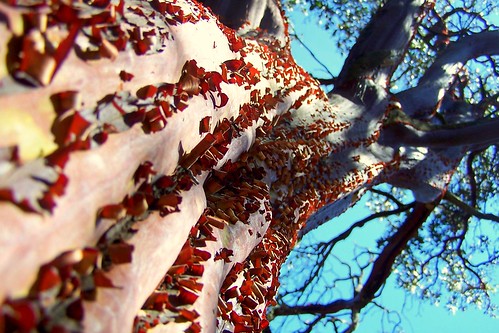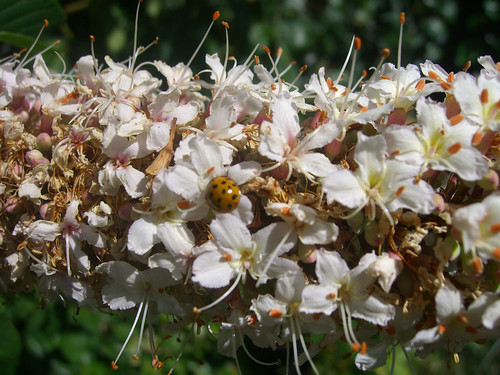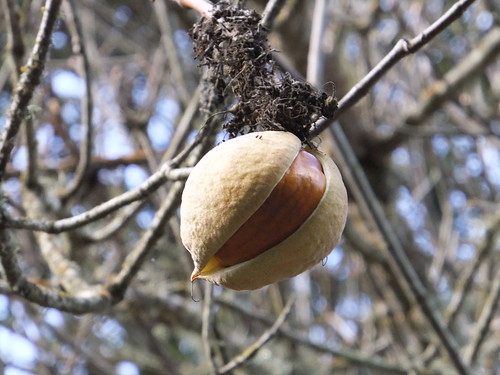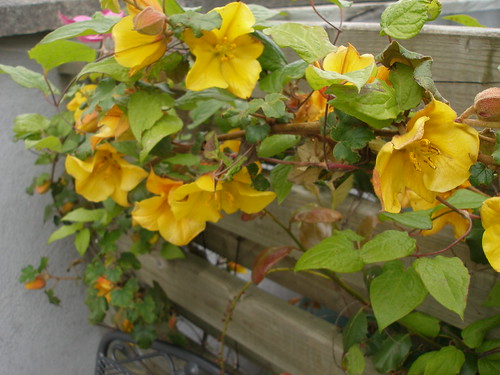
It’s planting season! Is your green thumb itching? If your landscaping could use a drought-smart update, now’s a great time to put new roots in the ground. Our Certified Arborist Linda Eremita shares her favorite native, drought-tolerant, and sun loving plants, each of which is resilient in LA’s hot, dry summers.
Saint Catherine‘s Lace
Eriogonum giganteum
The big pinkish-white, flat-topped flowers of this native California buckwheat appear in late spring and through summer before fading to red-brown. Saint Catherine’s lace grows in clay and other soils near the coast or inland. Not only is this plant drought-tolerant, it requires very little water to survive. In fact, you should plant it away from other plants that will need more watering this summer. Like other buckwheats, St. Catherine’s Lace will be great for attracting the insects, butterflies and birds that are essential to your home ecosystem.
© Dave Spindle
Apricot Mallow
Sphaeralcea ambigua
Apricot mallow is another California native, an evergreen perennial that blooms in spring. Although extremely drought-tolerant if left on its own, with a little extra watering it will flower all the way through summer. Plus, the pretty orangey-pink flowers are a great contrast to the grey-green leaves!
© Anne Reeves
Manzanita
Arctostaphylos
There are a variety of native Manzanita species, from “Point Reyes” ground covers (A. uva-ursi) to tall Bigberry shrubs (A. glauca) making it easy to find one to suit your landscape. These evergreens like it on the dry side, and they need a well-drained soil (although some flourish in clay soils, with a little extra water). In winter, you’ll know Manzanita by its white to pink bell-shaped flowers and red, smooth, sometimes peeling bark.
© brewbooks / Flickr
© ((brian))
California Buckeye
Aesculus californica
This deciduous, small native tree likes well-drained soil and a lot of sun, making it well equipped for drought survival. With a little extra water it will keep its leaves until fall, but will shed its leaves in summer if the soil is too dry. In spring, the flowers give off a beautiful scent, and large seed pods containing a single shiny brown seed will follow. But don’t be tempted to pick this tree’s fruit – all of its parts are poisonous to eat!
© mary / Flickr
© Martin Jambon
Flannel Bush / Fremontia
Fremontodendron californicum
This California native evergreen shrub requires very little water. In fact, it doesn’t tolerate summer watering at all. Bright yellow flowers cover this plant in spring and summer, making a dazzling sight. If a smaller hybrid is more your style, look for varieties called El Dorado Gold and Ken Taylor.
© Niall McAuley
Deer Grass
Muhlenbergia rigens
Deer grass is a striking and easy to maintain native grass. Its long, slender grey-green leaves turn a tawny brown in fall, and it can grow as big as 5 feet tall and 6 feet wide, the branches growing up and out like a spraying fountain. Let it be or cut it back in May every few years for a flush of fresh growth. If it out-grows its space, divide it in late fall through winter. You can plant the new sections elsewhere in your landscape, or pot them up for friends.
© EBlandranch / Flickr
Catalina Perfume
Ribes viburnifolium
Catalina perfume is a groundcover plant suited to dry shade, which makes it perfect for planting underneath oaks. Lovely maroon flowers bloom on its wide arching branches in mid-winter and into spring, and the leaves and stems have a spicy fragrance. Catalina perfume is good for erosion control on dry slopes with filtered shade. Very drought-friendly, it requires a deep watering just once a month in summer (but not if planted under oaks).
© John Rusk
Summer Holly
Comarostaphylis diversifolia
Although named for the summer, this native, evergreen shrub looks good all year! Bell-shaped, white flowers bloom from late winter to spring, and red-brown peeling bark, and bright, shiny leaves give it year round flair. Summer holly hedges are also great for attracting wildlife. Birds love the red berries that bloom from June to September. Summer holly does flower more in the sun, but it will grow in shade, and only requires water once or twice a month in summer.
© John Rusk
Toyon
Heteromeles arbutifolia
A real LA native, Toyon grows right here in the Santa Monica Mountains. With full sun and only an occasional watering, this plant is very easy to cultivate, and can grow as big as 18 feet tall. The young leaves can be susceptible to powdery mildew, but they often grow out of it, making for a fairly disease and pest resistant mature plant. White flowers bloom in summer, red berries grow in fall and winter, and clipped Toyon branches are great to include in a holiday centerpiece.
© NatureShutterbug / Flickr
© Debbie Ballantine
Western Redbud
Cercis occidentalis
This drought-tolerant California native is interesting all year. In late winter to early spring, the branches are covered with magenta-pink flowers, then rounded, heart-shaped leaves. Tiny magenta seed pods then replace the flowers. October and November bring colorful autumn leaves. And once the leaves drop, you’ll have a beautiful silhouette of dark, silvery branches. Western Redbuds can be either single or multi-trunked, growing to heights between 8 and 20 feet tall!
© John Rusk
Learn even more about native and drought-tolerant plants on a family tour of our own Coldwater Canyon Park, or find out which plants are best suited for your home’s landscape in an upcoming Native Plants and Turf Reduction Workshop.













